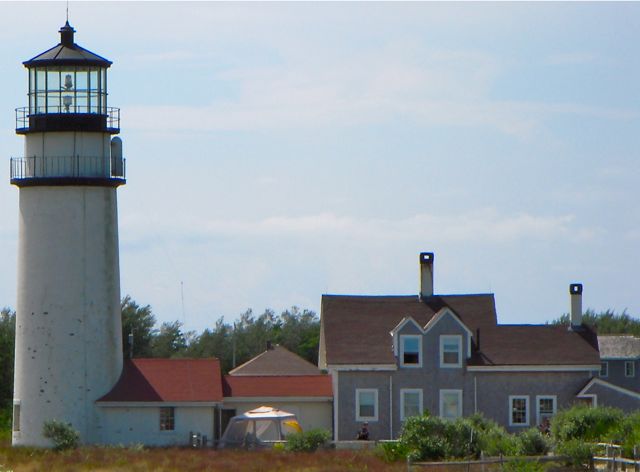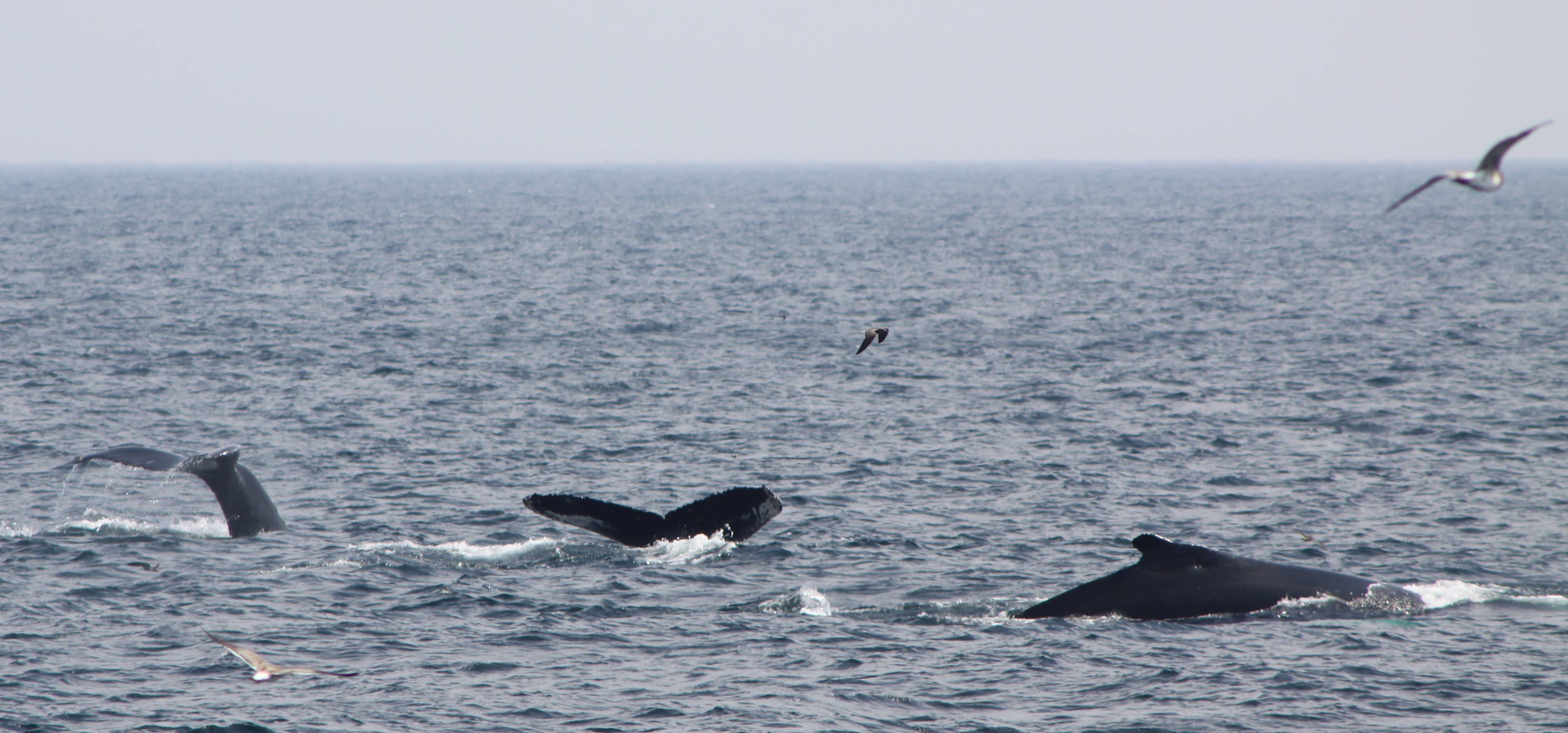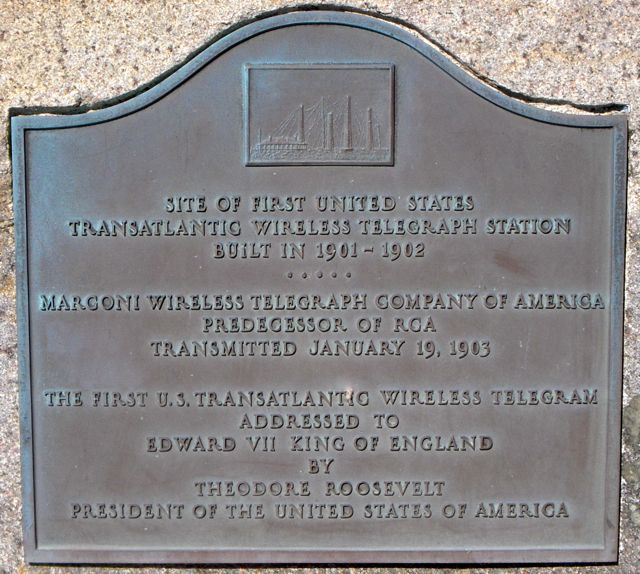My family and I spent a few days on the cape during during late August (hoping that the late date would mean less traffic and crowding). On our way out to our hotel, we arrived several hours before check-in time, so we decided just to explore some, driving around to find some of the cape’s 13+ lighthouses. Our first attempt at the Nauset light was met with the dreaded “Parking Lot Full” sign and a park ranger who looked like his day wasn’t going well. Not wanting to test nasty, we turned around and headed to the Cape Lighthouse (also known as the Highland Lighthouse — located in Truro MA).
After parking in the golf course lot, we walked out to the light, and as we were getting closer, I could have sworn that I saw a 20-meter dipole strung between the light and the house below. Rounding the back of the lighthouse, my suspicions were confirmed — sure enough there was a bright yellow tent housing all sorts of ham radio information and two happy hams working the special event station N1NC on 20-meter SSB. They were participating in LotA (Lighthouses on the Air); an international event designed to get ham radio operators on the air celebrating both ham radio and lighthouses. You can see the tent housing the radio station near the bottom-center of the photograph below, and if you look closely enough you can see the coax feed running to a sloping dipole.
The operators on N1NC explained that they were a public-service oriented radio club and this was part of their annual service. They described the event and managed to get me totally jazzed. Later that afternoon after having dinner, I took my BuddiPole and configured it as 1/4 wave 20 meter vertical, which I clamped to the wall of our porch. The counterpoise wire was strung to the back of a chair. A quick check of the AA-54 antenna analyzer confirmed that I had a low SWR right around 14.3 MHz. I pulled my FT-817 out of my “Go-Bag” and was on the air in about 20 minutes. I never was able to contact N1Nc, for all I know they were off the air, but I did have a QSO with a Lighthouse station in Belgium, also celebrating the event. That made my day, and I packed up my gear. From start to finish, less than an hour went into making a solid international contact for the LotA event, and everything was neatly packed and stowed away.
We saw many more lighthouses over our four-day visit. But the highlight had to be the whale watch out of Provincetown. Pretty much everywhere we go that has any sort of exposure to the sea, we manage to find tour-boat and get a chance to see the local sea-life. I can honestly say, however, that this whale watch was the best ever. To begin with, the weather was perfect (I’ve been rained on and frozen in some other attempts). But the real reason was an unbelievable number of whales. The naturalist said that we saw at least 25 unique whales that day. They would come up in groups of two to four, blowing bubbles on the way up — trapping fish inside a shimmering wall of bubbles. A few seconds before the whales would surface, the water would be boiling with fish and birds would swoop in to take their toll. The whales would then surface with their mouths open and drag themselves along the water scooping up an enormous quantity of fish. We witnessed this behavior time and time again for at least 90 minutes.
Cape Cod has the honor of being the birth-place of commercial wireless. Marconi set up a station in Chatham, MA and relayed messages via cable to a transatlantic transmitting station near Truro. This station then sent the message overseas. Here is the historical marker:











